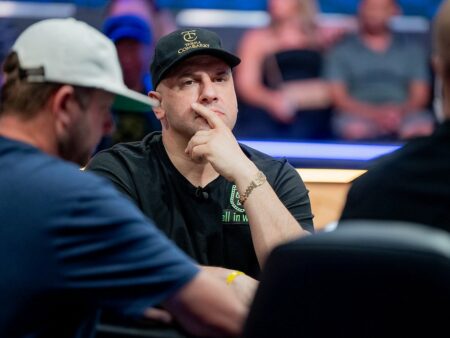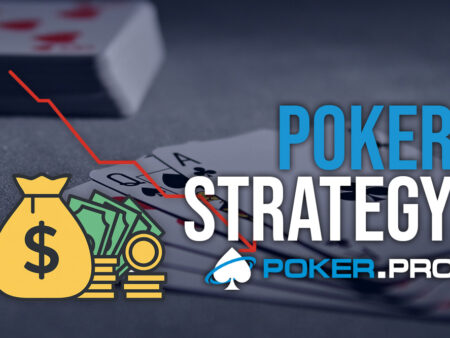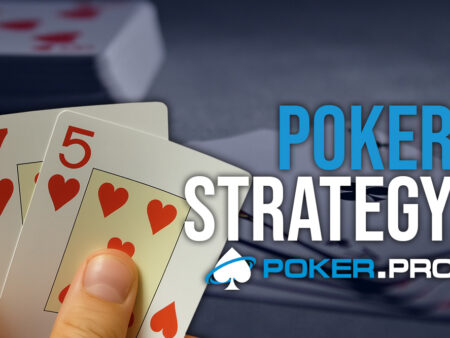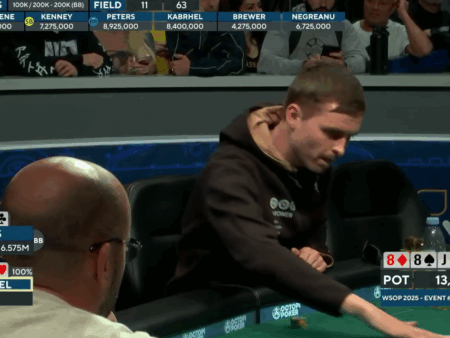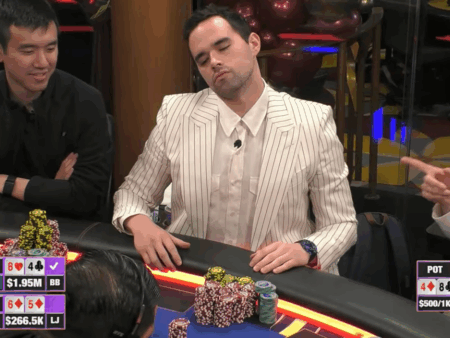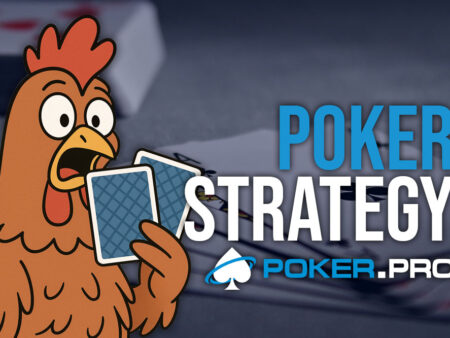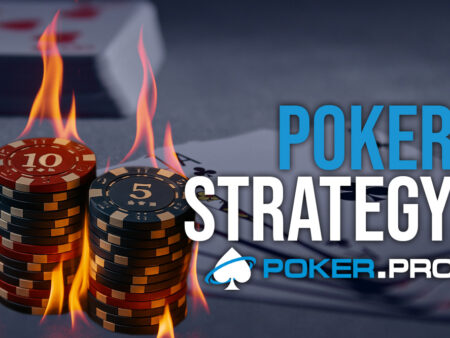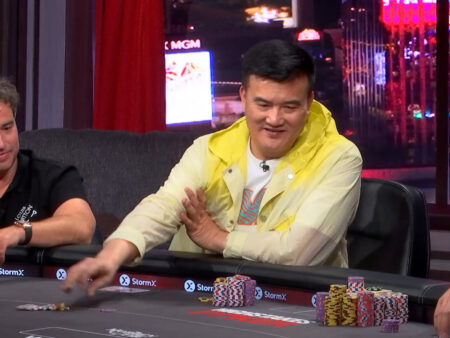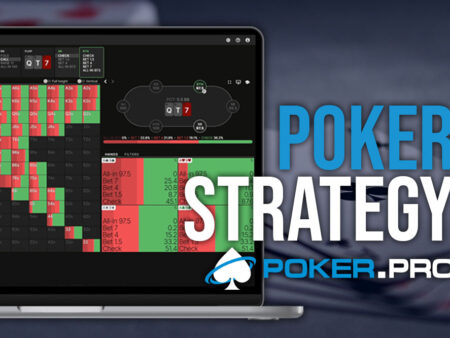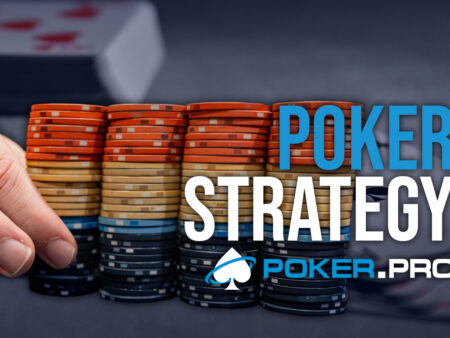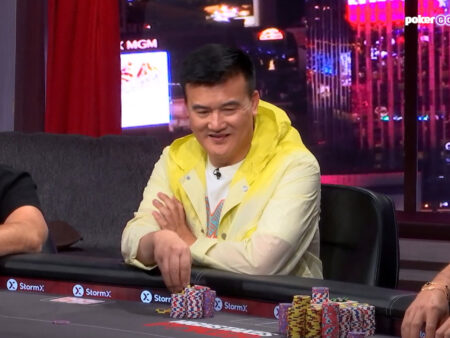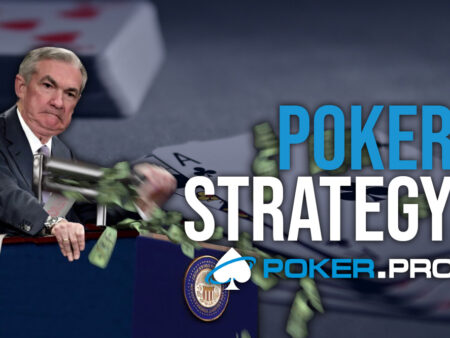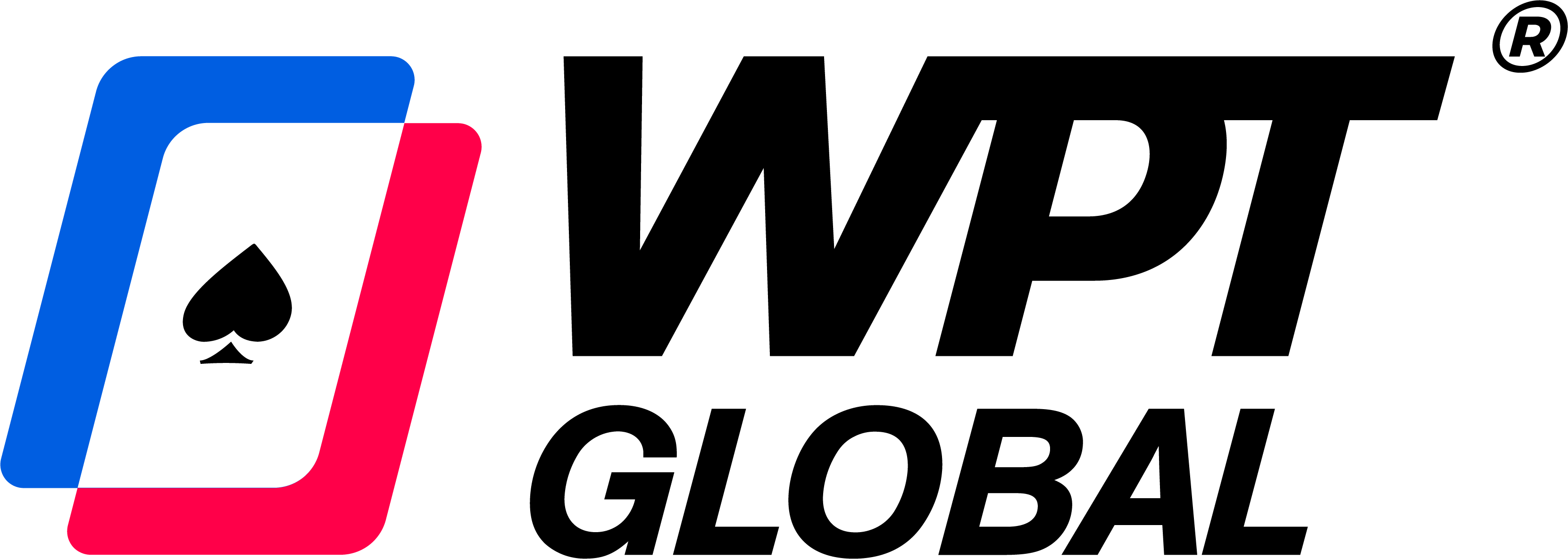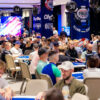Introduction to continuation betToday we’ll be looking at a concept that is fairly well known to most players in 2021, but it’s still a poorly…
Continuation Betting – All You Wanted to Know

Introduction to continuation bet
Today we’ll be looking at a concept that is fairly well known to most players in 2021, but it’s still a poorly played situation that will cost us a lot of chips, if we approach it incorrectly. We are talking about continuation betting or C-bet for short. Since it’s one of the most common actions we’ll want to take when at the tables, it’s important that we understand the concepts behind C-betting well.
What is a continuation bet?
When a player follows his/her preflop raise with a bet on the flop, this is a continuation bet. If a player that c-bet on the flop bets again on the turn, this is known as a turn c-bet. A third consecutive bet on the river is known as a river c-bet.
Basically, it’s called a continuation bet because we continue to tell the story that we have a strong hand that we started telling before the flop on the flop, and then sometimes also on the turn and river.
In position vs. out of position
There will be a few different scenarios when we find ourselves on the flop contemplating whether to C-bet or not and one of the more important ones is whether we are in position or not.
If we could pick we would want to play every postflop pot in position, but since our opponents have the same idea we want to open more hands in later positions (especially CO and BTN) since it’s a higher likelihood that we end up in position after the flop.
What exactly are the advantages of C-beting in position though?
First of all, in almost all scenarios where we start as the preflop aggressor, which must be true for our bet to be constituted as a C-bet, we will have the stronger preflop range since we were the ones raising and our opponent just called the bet which he will normally do with the weaker parts of his continuing range.
The second advantage we have is an informational one. That means that when we play a pot in position, all decisions we’ll make postflop are going to be after our opponent, which means that we’ll get the information whether he bet or checked his hand. This may not seem like a big thing but it’s actually a huge advantage.

On the other side, if we are the ones playing out of position we need to be less aggressive since now our opponent is the one that has the informational advantage, and playing more passively is one of the only ways to try and overcome this disadvantage, since this leaves our range more protected and disguised.
Even though we are at a disadvantage when we play out of position, our range is still stronger and uncapped compared to the in-position player. There are still some boards where we get to be quite aggressive, since we’re going to be the ones holding all the possible strong hands, which will leave our opponent in a tough situation. Some examples of these kind of flops would be: A82, AQ4, 662, KK7 etc. where we’re the only player that holds the strongest Ax hands (AK and AQ) or the strongest overpairs which our opponent would 3bet preflop.
C-betting in position
Let’s now take a look at an example of a Js8d3c board and see how our strategy changes depending on whether we’re in or out of position.
When we find ourselves in position on a board like this when we’re the preflop aggressor from let’s say the CO and we get a call from the BB, we can proceed quite aggressively with a lot of betting, since we have both the positional and range advantage, so our opponent has to play cautiously. For a better understanding of how to approach these kinds of spots we’ll group our hands in 4 categories and see how each of them wants to proceed.

Category 1 – Strong hands
On this kind of flop our stronger hands are QJ and better. These hands have no problem betting on the flop since we can try and get 3 streets of value on favorable runouts, so we want to start with a bet and start building the pot. Also, if we face a check raise while holding one of these hands, we can continue with our hand with no problems and reevaluate the situation on later streets.
Category 2 – Middle strength hands
On this board these hands would be 44-TT and our weakest Jx such as J7-JT. These hands want to be mostly checking, since it’s going to be hard to get 3 streets of value with them and they are also quite vulnerable to check raises. The weakest top pairs are in this category mostly for the purpose of protecting our checking range, since these are the type of hands that will have no problem calling two streets and bluff catching against our opponent.
Category 3 – Bluffs
We use the 3rd category of hands to balance out the first category, so our opponent has a tough time playing against us since he can never be sure, if we’re betting a strong hand for value or if we’re bluffing. The type of hands that are good fits to this category are straight draws (OESD and gutters), flush draws and even hands with overcards and backdoor draws. So, examples of good hands to start bluffing with on this board would be T9, QT, 97 and hands with two overcards and BDFD such as KQcc, AQdd etc.
Category 4 – Weak hands
These are the hands that have very little equity and showdown value and should mostly be checked with the plan of giving up the pot except in the case we improve. Examples of hands like that would be 22, A3o etc.
C-betting out of position
Now let’s say that we open the CO and get flatted in the BTN. Our range looks the same as in the first example, but now we’re playing out of position, so as mentioned we need to proceed with more caution since our range advantage on this board isn’t big enough to compensate for the informational disadvantage we’re facing.
How should we adapt our range to this new situation while still staying balanced? As a general rule, we’re going to want to do more checking with both our value hands and bluffs, which is going in turn mean that we play our range more conservatively as mentioned before.
If we look at the previous example and see how we should do that in practice our new range would look something like that:
QJ and KJ should be moved from Category 1 to Category 2. This strengthens our check range and now we’ll have an easier time continuing more often when facing bets from our opponent.
Another great hand that can be moved from our betting to the checking range would be AA, since it needs very little protection and also unblocks all of our opponents bluffs, but you should be careful to not do this too often.
In turn since we now have less valuebets in our Category 1, we need to shrink our Category 3 (bluffs) range as well. We can still continue to bet our highest equity draws such as open ended straight draws and flush draws, but should resort to checking more often with our gutshots and overcards with backdoors.
The last category of hands that is very tricky to play in these spots are our strongest A highs like AK-AQ. We have a lot of these kind of hands – 32 combinations to be exact. These hands are good check backs when we’re in position, but things get much trickier when we’re OOP.
If we check/call all of these combinations our range is going to be too weak on the turn, which allows our opponent to bluff very profitably.
If we check/fold all off them however, we’ll be folding too much on the flop. So, the best adjustment we can make in this situation is to play this kind of hands with a mixed strategy. Check/calling some of them and check/folding the rest. The best candidates for check/calls in this hand group are the ones with a BDFD but since that usually isn’t enough you can use a random number generator or flipping a coin to decide with the others.
Sizing
Another important factor when deciding on C-bets is the sizing we are going to use. This is where a lot of players still make mistakes since it can be quite a complex decision. These days a reasonable sizing for a C-bet can be from 25-100% of the pot. Let’s take a look at the factors that decide which sizing is optimal.

1. Board Texture
Two of the most important reasons to C-bet is to get value or to deny equity from our opponent. The thing that affects these two categories the most is the board texture.
Dry/static boards
On dry boards equity denial is not very important, since hands that are behind our value betting range lack equity to continue and are therefore unlikely to suck out on us on later streets. This is why we aren’t incentivized to bet large and force our fold equity, so the best sizing on these boards is small – 25-33% depending on the exact board and our stack size.
Another important thing to consider is that our opponents’ range is very inelastic to bet sizings on this kind of boards, so betting large isn’t going to give us more fold equity. An example to demonstrate this could be a 55T board where our opponent is going to continue with a 5x, Tx, some overcards with BDFD and A highs. As you can see there aren’t almost any hands that care about the sizing we pick, and therefore we can bet smaller to just target the auto folds in his range.
Wet/dynamic boards
On the other side of the coin, we have wet boards where the chances of our opponent outdrawing our strong hand goes up. Smaller bet sizes are ineffective on these boards since they allow our opponent to realize his equity too easily. Another reason for betting big is that, since our opponent is going to connect with this kind of boards more often, we get more value with our strongest hands.
2. How does your sizing affect opponents continue range
The bigger we decide to bet the stronger our opponents’ range is on the next street. If we bet a large sizing both one flop and turn, we can expect our opponent to show on the river with his strongest made hands or high equity draws on the turn.
If, however we bet small, we keep both of the ranges wide. We should do that when our range contains a lot of weak to middle strength hands, since we can then value bet more often and pick out the good bluffing candidates to balance our value bets with. You do have to be careful on turns and rivers when going for small bets, since it’s going to happen more often that our opponent hits his 2nd pair or backdoor draw until the river, since we didn’t apply as much pressure on him and allowed him to continue with weaker hands.

